![]() Imagine a cross between association football, field hockey and ice hockey and you’ll be somewhere in the realms of what bandy is as a sport. The majority of sports fans would almost certainly be lying if they said they knew all that much about bandy, yet when it comes to the sheer number of people that participate in it every year then it is second only to ice hockey in terms of winter sports.
Imagine a cross between association football, field hockey and ice hockey and you’ll be somewhere in the realms of what bandy is as a sport. The majority of sports fans would almost certainly be lying if they said they knew all that much about bandy, yet when it comes to the sheer number of people that participate in it every year then it is second only to ice hockey in terms of winter sports.
Remarkably, the International Olympic Committee believes that there is a disconnect between the number of people that play it and the number that would like to watch others playing it, ruling it out of being an Olympic sport any time soon.
That doesn’t mean that it’s not worth learning about, of course. It is known by some as Russian hockey, which betrays the origins of the sport as far as those in the former communist state are concerned. The sport’s actual origins are a little more murky than that, with both Holland and England boasting sports that it could have developed out of.
What we do know is that two teams of 11 players apiece go up against each other for 2 halves of 45 minutes each, just like football, using sticks to try to get a ball into the opposition’s goal, just like hockey. The fact that it is played on ice and the players are on skates tells you where the ice hockey part of things comes into effect.
Best Bandy Betting Site
10Bet

Despite many of the sports origins coming from Britain it is actually on the continent where most interest in Bandy is seen. Therefore to bet on the sport you are generally best to go with a European betting site, such as 10Bet.
10Bet's originates from Easter Europe, where ice sports are more commonly played and watched.
It is therefore the site to go to if you want to bet on Bandy, especially if you are looking for a choice of markets and ante-post options.
How To Bet On Bandy
| Bet Type | Explanation |
|---|---|
| 1×2 | As with football, this is a bet on either the home team (1), the away team (2) or the draw (X) |
| Handicap Betting | As you’d expect from the name, this bet allows you to figure out if one team has an extreme advantage over another and then given them a handicap accordingly |
| Totals | This bet involves figuring out how many goals there’ll be in a match and whether or not there will be more than the ‘total number of goals predicted by the bookie |
| Outrights | Betting on the outright winner of a tournament is also fun, though when it comes to bandy you’ll almost certainly want to make sure you look long and hard at the Russians |
The History Of Bandy
‘Hockey On Ice’
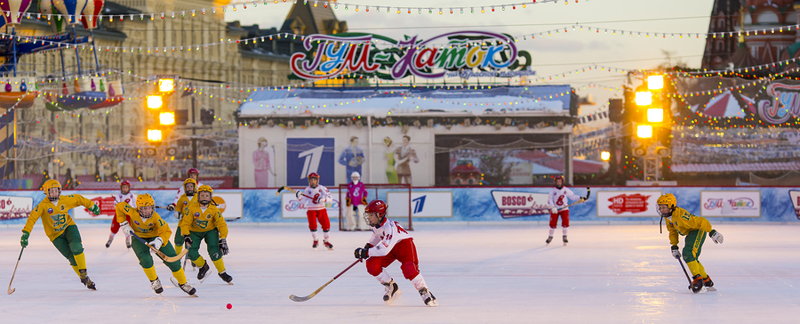 While the Scottish were busy developing a sport that would go on to become curling and those in northern England were creating association football, those in the Fenlands of East Anglia were developing a winter game that was played on the ice that formed when the flooded meadows had frozen over.
While the Scottish were busy developing a sport that would go on to become curling and those in northern England were creating association football, those in the Fenlands of East Anglia were developing a winter game that was played on the ice that formed when the flooded meadows had frozen over.
Skating had been a tradition in the area on the frozen water known as Fen Skating, so it was natural that an attempt to develop a competitive sport based around the same idea would follow.
In 1882 the Bury Fen Bandy Club published rules for the new sport, also taking it to other countries when the opportunity presented itself. The first international match took place 9 years later when the Haarlemsche Hockey & Bandy Club from Holland took on the Bury Fen Bandy Club.
1891 was also significant as it was the year that the English National Bandy Association was formed. There had been a match in 1875 at London’s Crystal Palace, but it was only considered to be a bandy match in retrospect as at the time it was called ‘hockey on ice’.
The Game Develops Into Bandy
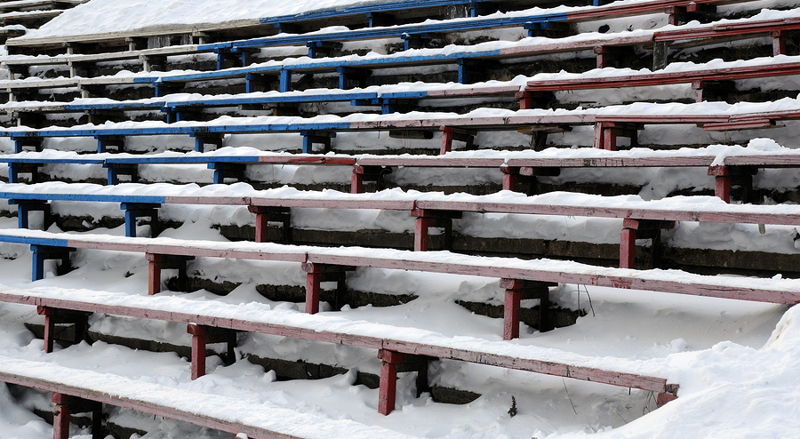
The ‘hockey on ice’ label was likely given because of the sport’s links to field hockey, but by 1902 the rules published by the Bury Fen Bandy Club had been accepted and the sport became far more widespread.
That year saw the first national bandy league being formed in Sweden, coming a year after the sport had been featured in the Nordic Games that had been held in Stockholm and what was then known as Kristiania and is now Oslo. That was followed by a European Championship tournament in 1913.
Five countries took part in that initial European Championship of bandy, namely Bohemia, England, France, Germany and Switzerland with the Germans emerging triumphant. Russia and Sweden had been invited to take part but they played 11 v 11 and the tournament was for teams of seven.
The tournament was seen as a success but the ever-growing sport of bandy saw its growth halted by the outbreak of the First World War. When the War concluded and the International Olympic Committee was looking for sports to include in the 1920 Summer Olympics they chose to opt for ice hockey over bandy on account of the former sport being better known in North America.
The Russians Take Control Of The Sport
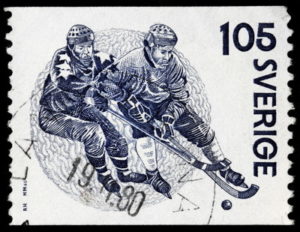 The International Olympic Committee’s decision to ignore bandy in 1920 nearly saw the sport come to an end before it had really begun. The players in Britain and Central Europe turned to ice hockey instead, feel that that was the sport that the were most likely to be able to play in the Olympics with. As a result the sport was mainly played in Nordic countries as well as Estonia, Latvia and the Soviet Union.
The International Olympic Committee’s decision to ignore bandy in 1920 nearly saw the sport come to an end before it had really begun. The players in Britain and Central Europe turned to ice hockey instead, feel that that was the sport that the were most likely to be able to play in the Olympics with. As a result the sport was mainly played in Nordic countries as well as Estonia, Latvia and the Soviet Union.
Even Latvia and Estonia saw the sport drop off the radar until they lost their independence and became Soviet Republics. This allowed the then-Soviet Union to take a stronghold on the sport, being one of the founding nations of the International Federation for the sport when it was created in 1955. When you combine the Soviet Union and Russia’s records they have also been the most successful team in the bandy World Championships.
Bandy, Ice Hockey And Association Football
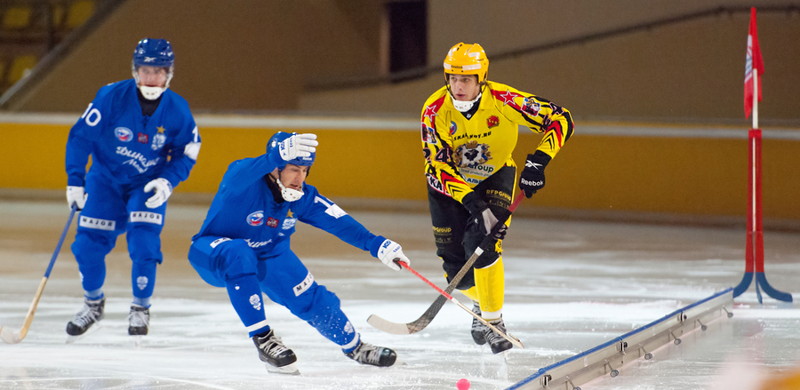
Bandy was the sport that came before ice hockey, with the latter sport being created in Canada whilst bandy was played Europe and the Soviet countries. The two sports developed simultaneously and influenced each other, with ‘hockey’ being the name given to bandy until the Canadian export came over to Europe in the early part of the 20th century.
Meanwhile, the rules of bandy began to take more definitive shape and a cross between the English and Russian rules were developed, seeing the majority of the rules being English and following a similar line to those being created for association football.
A look back at the early stage of some well-known football clubs betrays their origins as being sports clubs for both association football and bandy, with European Cup winners Nottingham Forest originally being known as Nottingham Forest Football and Bandy Club. Indeed, the Norwegian club Mjøndalen IF still has a bandy section for its members.
Part of the reason that ice hockey overtook bandy was to do with the decision of the International Olympics Committee, but it also helped that the size of field needed for ice hockey is significantly smaller than that required for bandy. Certainly the less physical, speedy and flowing play of ice hockey favoured by the Europeans comes from the world of bendy.
The Rules Of Bandy and How To Play
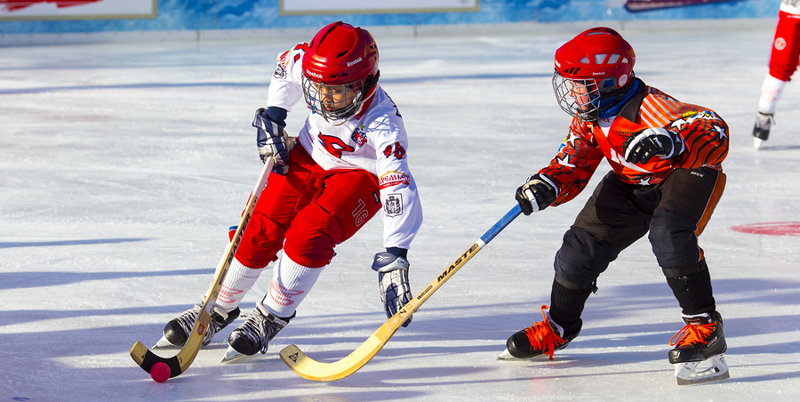
Played on ice with a single ball, bandy involves two teams with 11 players on each using sticks to score a goal into the opposition’s net. It is typically played on an ice playing surface the same size as a football pitch, which is just one of the similarities that the game has with the sport. Others include the fact that one of the players must be a goalkeeper and that the offside rule is valid.
Players are not allowed to deliberately touch the ball with their hands, arms or head unless they are the goalkeeper, with a heading of the ball ending up in players suffering a 5 minute penalty. They can use their skates to move the ball around to a limited degree. Games tend to flow freely and they are only stopped either if the ball goes out of play or the referee believes that there’s been an infraction of the rules.
Teams out of possession can attempt to regain it by intercepting a pass or by tackling the player with the ball. Unlike in ice hockey, physical contact between players tends to be far more limited in bandy. If play is stopped by the referee then it will recommence via either a free stroke, a corner stoke or a penalty shot. If the ball has gone out of play then a restart stroke is taken by the opposite team to the one that touched it last, much like football’s throw-in system.
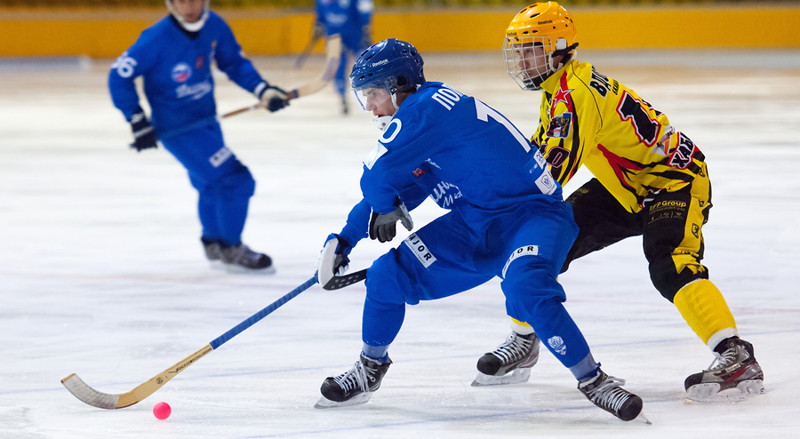
There are 18 official rules, which are as summed up as follows:
- The rink is rectangular, not less than 90 metres nor longer than 110 metres, whilst also being a minimum of 45 metres and a maximum of 65 metres wide
- The ball will be an easily identifiable colour, sticks are to be wood or another approved material and no longer than 125 cm, whilst the skates mustn’t have any sharp points. Everyone on the pitch must wear a protective helmet and goalkeepers need to wear a face guard
- Teams are made up of 11 players and 5 substitutes, of which one player must be a goalkeeper
- Matches last for two halves of 45 minutes each unless otherwise decided. If there’s extreme weather the referee can choose to break the match up into more than two halves
- Goalkeepers can throw themselves onto the ice to make a save, other players may not. Only goalkeepers can take part in the game without their stick
- Goalkeepers cannot pick up a ball passed back to them deliberately, nor can they hold onto the ball for longer than 5 seconds
- Players can hit the ball in any direction with their stick, they can also direct the ball with their skates
- It’s against the rules to kick, trip or push an opponent or play violently. If a rule is broken then a free-stroke is awarded, which becomes a penalty stroke if the infraction is in the penalty area. Offenders can be given a penalty time out of 10 minutes or for the rest of the match
- The team that scores the most goals wins
- The ball can be put back into play via numerous different methods, including corners and free-strokes from the sideline
- Players cannot receive the ball in an off-side position, with free-strokes being given if they do
- Free-strokes can be awarded for a number of reasons
- The execution of free-strokes is monitored closely, with balls needing to move at least 20 cm to be counted as having been executed
- Penalties are awarded for violent or illegal play in the area, as well as a number of other reasons
- Any player not suffering a penalty and other than the goalkeeper and reserve goalkeeper can take a penalty shot
- If a game is a draw after 90 minutes then a penalty shot competition can decide the winner
- Referees will penalise players and coaches with a verbal warning, yellow card, 5 minute penalty, 10 minute penalty or full match suspension depending on the rules broken
- The referee is in charge of the game from the moment he arrives in the playing area until the end of the match
Players
As with association football, players tend to break down into defenders, midfielders and attackers with a goalkeeper being the constant throughout.
There is no requirement within the rules for a player in any position other than the goalkeeper, so the placement of players becomes a tactical decision.
Equipment
The key pieces of equipment in bandy are bandy skates, a helmet, a mouthguard, a face guard for goalkeepers, the stick and, of course, a ball.
It’s important that bandy sticks contain no metal or sharp, pointy bits that could injure an opponent. They are crooked at the ‘hitting’ end, with the angle of crook fitting into 1 of 5 categories, of which 4 is the most common.
The Playing Field
Have a look at the 18 official rules for the dimension of the pitches used in bandy. In terms of the look of the pitch, there is a line in the centre and a circle from where play begins.
The ‘boxes’ are semi-circular in appearance, with two circles on the outer edge of them for free-strokes to be taken from.
Rink Bandy
Rink bandy is a variation on the bandy theme, played on a rink the same size as the ones used for ice hockey matches.
This allows countries that don’t have the necessary facilities to play bandy properly to still take part in the sport and some countries only have rink bandy facilities.
Major Bandy Tournaments
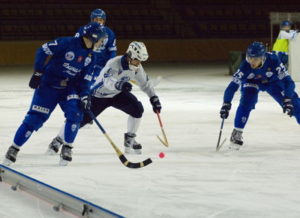 Despite creating the sport and winning the 1913 European Bandy Championships, the sport is not popular in England any more. It’s still widely played in plenty of other European countries as well as Russia and the United States.
Despite creating the sport and winning the 1913 European Bandy Championships, the sport is not popular in England any more. It’s still widely played in plenty of other European countries as well as Russia and the United States.
As you can imagine, then, the number of bandy tournaments is significantly less than with more popular sports such as football and tennis. Nevertheless, there are still a number of interesting ones worth telling you about:
- World Championships – Arranged by the Federation of International Bandy, this was first held in 1957 and hosted every two years after 1961. In 2003 this moved to every year, with more countries joining each time the competition takes place. It is only for men
- Women’s Bandy World Championship – The equivalent to the male tournament, this started up in 2004
- The Olympics – Bandy isn’t an official Olympic sport, instead being what is known as a demonstration sport. This is when sports are played during the Olympics to introduce them to new audiences but medals are not awarded
- Asian Winter Games – Men’s bandy was included in the program for the Asian Winter Games for the first time in 2011, but it was removed when the 2017 Asian Winter Games took place in Japan
- Winter Universiade – Bandy made its Winter Universiade debut in 2019 with a 6-team tournament for men and a 4-team one for women
- World Cup – Every sport worth its salt has a World Cup and bandy is no exception. It was inaugurated in 1974 and takes place annually in mid-October in Sweden
